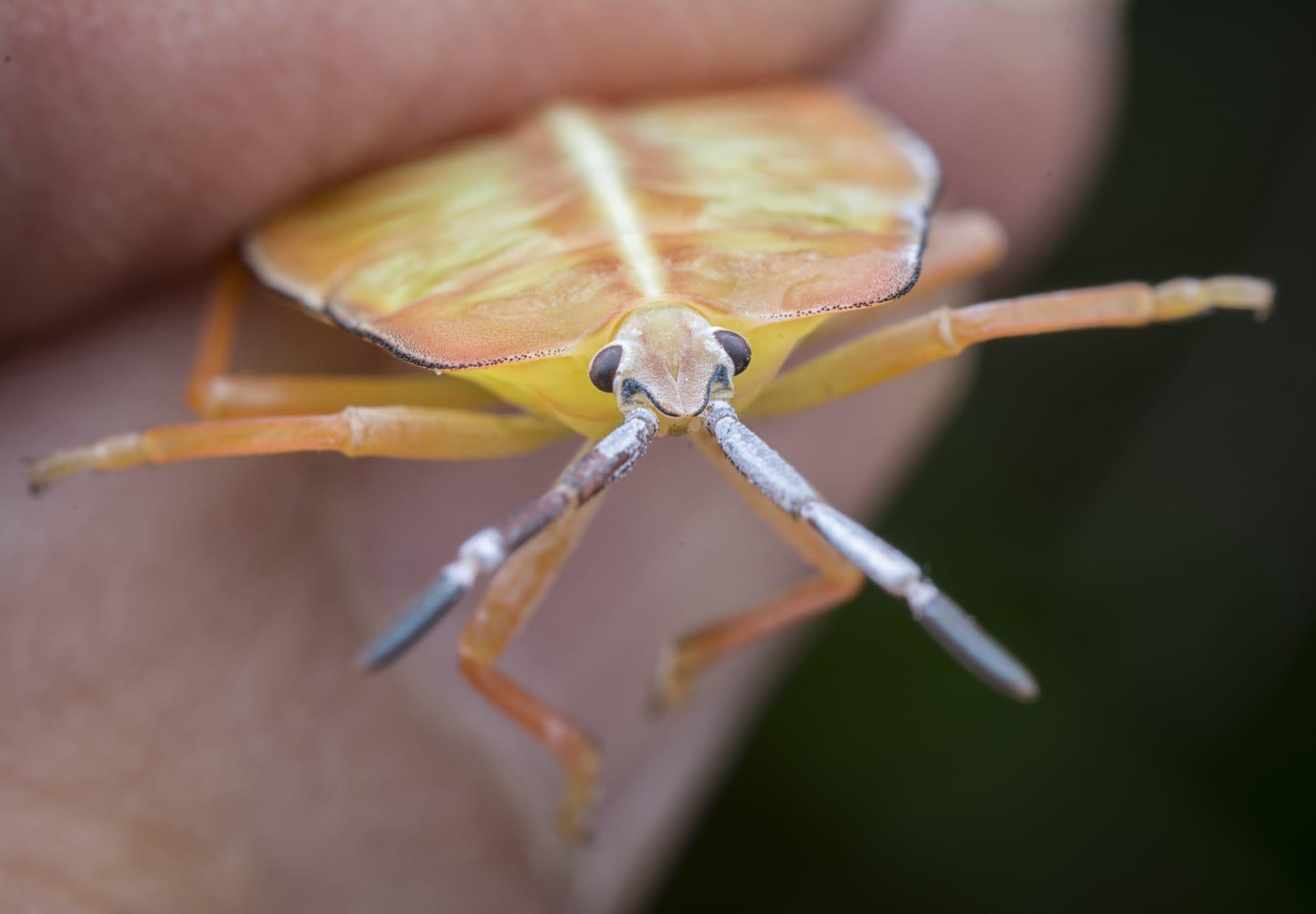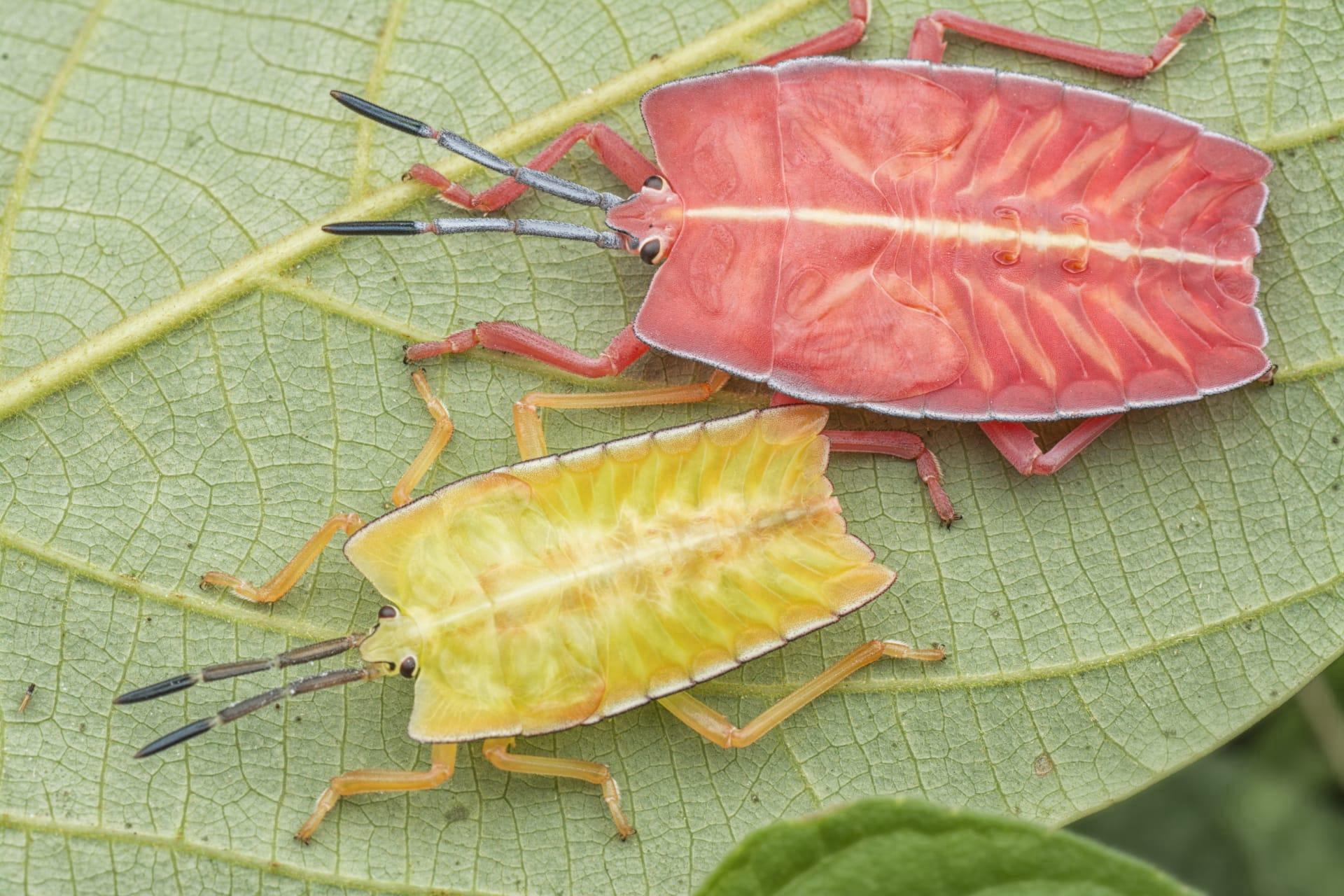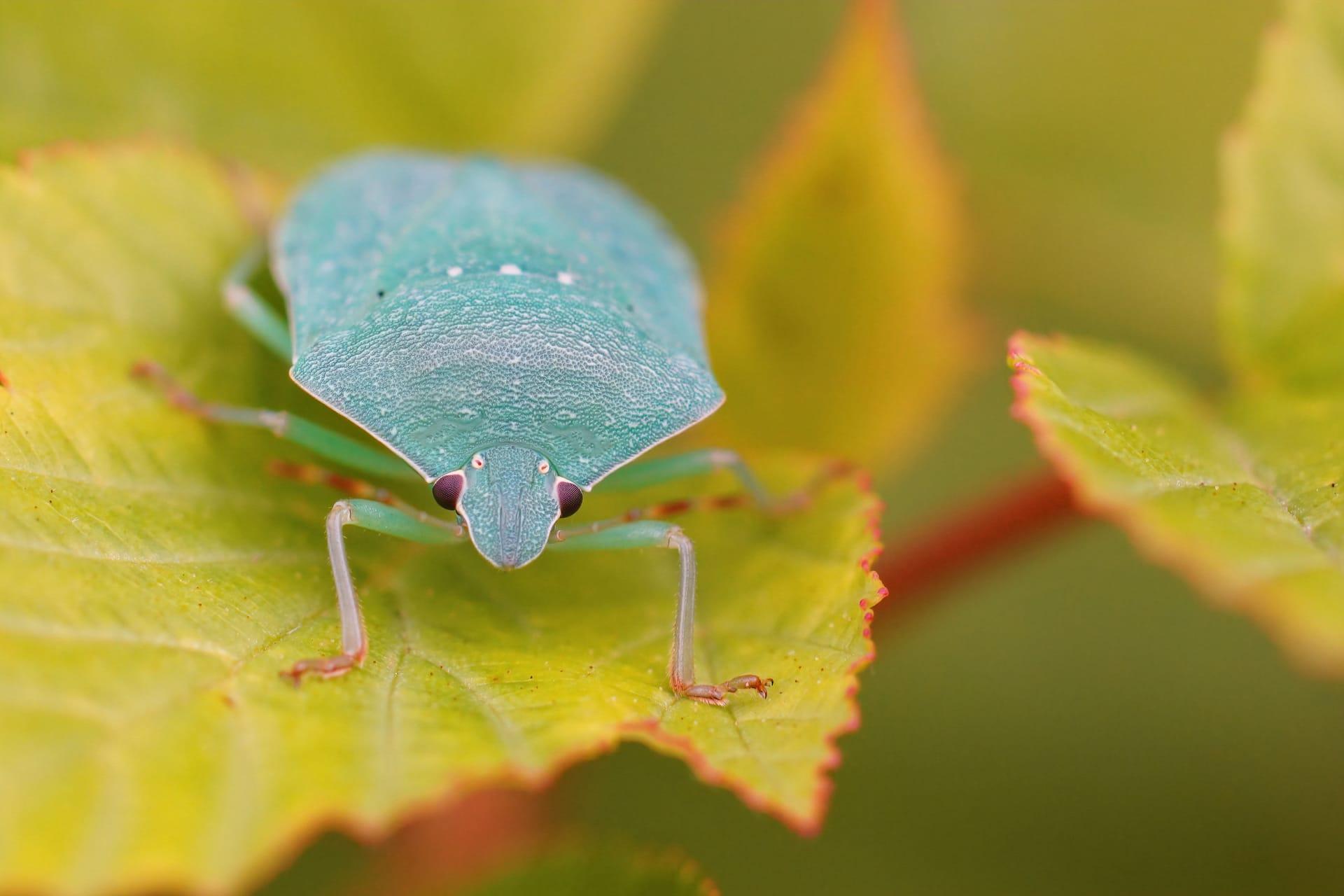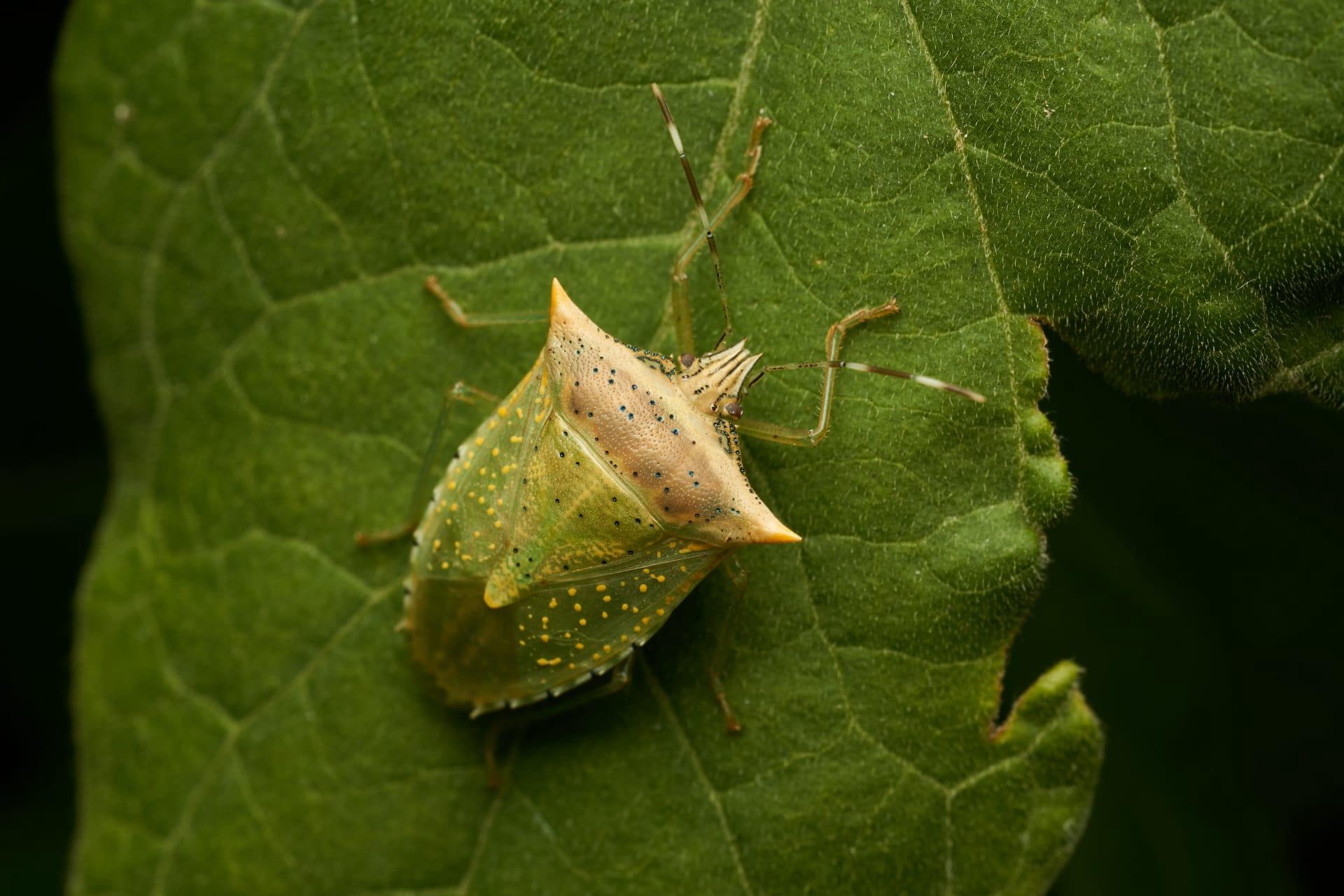1
Shield bugs, also known as stink bugs, are named for their shield-like shape. Their exoskeleton, which resembles a medieval shield, serves as a defense mechanism against predators. This unique shape is not just for show; it effectively helps them camouflage among leaves and twigs, making them hard to spot. The average shield bug measures about 0.5 to 0.75 inches (1.3 to 1.9 cm) in length, although this can vary among the over 4500 species found worldwide.
One of the most fascinating facts about shield bugs is their ability to produce a foul-smelling liquid as a defense strategy. This odor, emanating from glands located on the abdomen, is particularly pungent and can linger for a considerable amount of time. The smell is not only offensive to predators like birds and lizards but also to humans. The effectiveness of this defense is seen in the bug's ability to deter even the most persistent of predators, making it a crucial survival tool in the wild.

2
Shield bugs are known for their vibrant and varied colors, which serve multiple purposes. These colors can range from green, brown, to bright red and are not just for aesthetics; they play a crucial role in communication and survival. For instance, bright colors can warn potential predators of their foul taste or toxicity. This phenomenon, known as aposematism, is common in nature and helps shield bugs to avoid becoming a meal.
Another interesting aspect of shield bugs is their unique life cycle. They undergo incomplete metamorphosis, meaning they don't have a pupal stage like butterflies. Instead, they hatch from eggs as nymphs, which resemble miniature versions of the adults but without fully developed wings. As they grow, they molt several times before reaching adulthood. This process can take from a few weeks to several months, depending on the species and environmental conditions.

3
Shield bugs are not just solitary wanderers; some species exhibit a fascinating behavior known as aggregation, where they gather in large numbers. This behavior is particularly noticeable in the autumn, as they prepare for overwintering. They often congregate on the sunny sides of trees, rocks, or buildings, creating a striking visual spectacle. Aggregation provides several benefits, including increased warmth, humidity regulation, and protection from predators.
Interestingly, shield bugs are also known for their plant-feeding habits. They use their needle-like mouthparts to pierce plant tissues and suck out the sap. This feeding behavior can be harmful to agriculture, as they often target crops like fruits, vegetables, and grains. Some species are considered major agricultural pests, causing significant damage and economic loss. Their preference for a wide range of host plants makes them a challenge to manage in farming environments.

4
Did you know that some species of shield bugs are considered beneficial insects? While many are known for their destructive feeding habits, certain species prey on harmful pests like caterpillars and aphids. These predatory shield bugs are valuable allies in natural pest control, helping to maintain a balance in ecosystems and reducing the need for chemical pesticides.
Shield bugs have a unique communication system involving vibrations. They communicate with each other by producing vibrations through substrates like plant stems and leaves. This form of communication is used for various purposes, including mating and signaling danger. The complexity of these vibrational signals varies among species, illustrating a sophisticated level of interaction rarely observed in insects.

5
Temperature plays a significant role in the life of a shield bug. Their activity and development are temperature-dependent, with higher temperatures generally accelerating their life cycle. However, extreme heat can be detrimental, causing stress and even death. Conversely, during colder months, shield bugs enter a state of diapause, a form of hibernation, to survive until conditions improve.
Shield bugs have a unique adaptation in their legs. The tarsi, or the end segment of their legs, are equipped with specialized pads and hairs. These adaptations allow them to grip and walk on a variety of surfaces, including smooth, vertical, or upside-down positions. This ability not only aids in their mobility across different terrains but also assists in escaping predators and foraging for food in diverse environments.